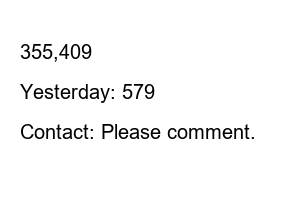고속도로 갓길통행위반▶ Contents
1. Meaning and use of the shoulder
2. Fines and penalty points for driving on the shoulder (fine)
3. Variable lane meaning and traffic method
4. Variable lane violation fines and penalty points (penalties)
5. Clearing the difference with variable lanes on the shoulder
On the highway, there is a shoulder that is slightly smaller than the general lane on the far right. In the Road Act, a shoulder means a shoulder, and it is a road separated by zone lines at the edge of a road so that it can be used when emergency driving is necessary, such as when an emergency vehicle moves or a vehicle breaks down.
That’s why you shouldn’t pass any vehicle. Article 60 of the Road Traffic Act prohibits traffic on the shoulder of the road, which states that ‘you shall not pass on the shoulder of the road, except in the case of unavoidable circumstances such as breakdown of a car on an expressway.’ Emergency vehicles dispatched in case of fire, accident, emergency, etc., highway maintenance, and police officers are allowed to pass if they follow the signal instructions.
Since vehicles may be stopped on the shoulder due to an accident or breakdown, driving on this side of the road is very dangerous, such as a secondary accident. It is said that the fatality rate of secondary accidents on highways is 6.7 times that of general accidents. If the vehicle breaks down and you have to stop on the shoulder, be sure to turn on the emergency lights and quickly move to a safe place outside the guardrail in preparation for a secondary accident.
If driving on the shoulder of the highway is violated, a fine of 60,000 won (70,000 won for a van) and 30 penalty points will be imposed. In addition, if you overtake another vehicle on the shoulder, you will be fined 60,000 won (70,000 won for a van) and 10 demerit points for violating the overtaking method on the highway. In fact, almost no unmanned cameras are in operation to control driving on the shoulder, so most of the crackdowns are carried out by police’s sudden crackdown or black box video report.
Variable lanes are completely different from shoulder roads. A shoulder is always a place where driving is prohibited, but a variable lane, as the name suggests, is a road that changes from time to time. A separate signal is installed in the variable lane. Driving is possible when the arrow signal is green, and driving is not possible when there is an X mark in red.
Also, not all vehicles can drive on variable lanes. Because the road is rather narrow, only small cars can drive. According to the Motor Vehicle Management Act, the standard for compact vehicles is passenger cars and vans with a maximum capacity of 15 passengers or less, and cargo and special vehicles with a total weight of 3.5T or less and a maximum load capacity of 1T or less. In other words, you can understand that all cars can drive.
The penalty for violation of the variable lane is 60,000 won (70,000 won for a van) and 15 demerit points. Compared to driving on the shoulder, the penalty is less than half. This is because variable lane violations are regarded as signal and instruction violations, not shoulder traffic violations.
Finally, we will summarize the difference between variable lanes and shoulder roads.
Violation of the designated lane Fines Penalty points
hello. This is Hunslog. Table of Contents 1. Designated lanes other than expressways 2. Designated lanes on expressways 3. Fines for violation of designated lanes (fines and penalty points) Designated lanes other than expressways
tra1.tistory.com
355,409
Today : 4
Yesterday: 579
Hunslog
Contact: Please comment.

